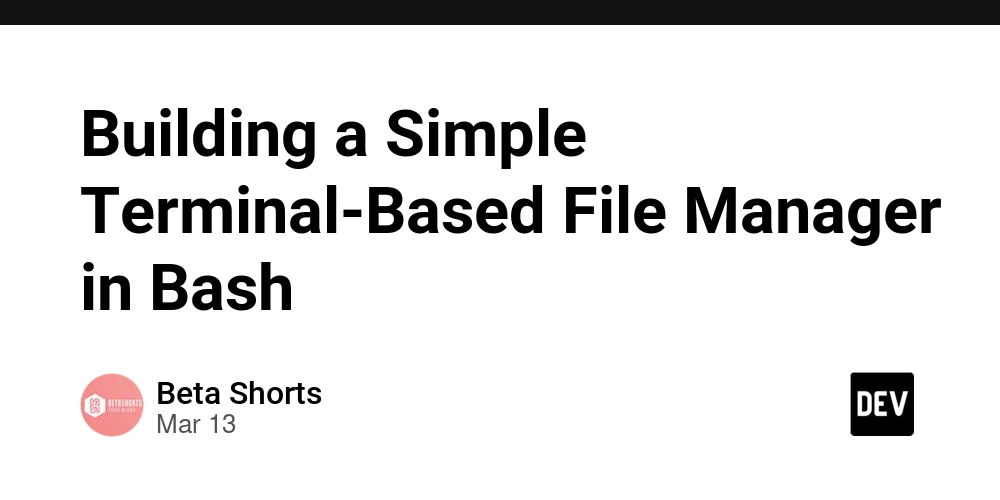Building a Simple Terminal-Based File Manager in Bash
A while ago, I found myself juggling between ls, cd, rm, and mv commands just to move and manage files across different directories. It felt inefficient—why not have a lightweight file manager right inside the terminal? If you’ve ever wished for a simpler way to navigate and manipulate files without leaving the terminal, this guide will show you how to build a basic file manager in Bash—one that lets you browse, create, delete, and move files interactively. Understanding the Core of a Terminal File Manager A terminal-based file manager is essentially a Bash script that allows users to navigate directories and manage files using menus and keyboard inputs. What It Should Do ✅ Display a list of files and directories ✅ Let users navigate between folders ✅ Provide options to delete, move, or rename files ✅ Offer a simple interface using the terminal This can be accomplished using a combination of Bash commands like ls, cd, rm, and mv, along with interactive menus using select or read. Step 1: Listing Files and Directories The first step is displaying the current directory contents in a structured way. Instead of using a plain ls, let’s format the output to distinguish between files and directories. for item in *; do if [ -d "$item" ]; then echo "[DIR] $item" else echo "[FILE] $item" fi done

A while ago, I found myself juggling between ls, cd, rm, and mv commands just to move and manage files across different directories. It felt inefficient—why not have a lightweight file manager right inside the terminal?
If you’ve ever wished for a simpler way to navigate and manipulate files without leaving the terminal, this guide will show you how to build a basic file manager in Bash—one that lets you browse, create, delete, and move files interactively.
Understanding the Core of a Terminal File Manager
A terminal-based file manager is essentially a Bash script that allows users to navigate directories and manage files using menus and keyboard inputs.
What It Should Do
✅ Display a list of files and directories
✅ Let users navigate between folders
✅ Provide options to delete, move, or rename files
✅ Offer a simple interface using the terminal
This can be accomplished using a combination of Bash commands like ls, cd, rm, and mv, along with interactive menus using select or read.
Step 1: Listing Files and Directories
The first step is displaying the current directory contents in a structured way. Instead of using a plain ls, let’s format the output to distinguish between files and directories.
for item in *; do
if [ -d "$item" ]; then
echo "[DIR] $item"
else
echo "[FILE] $item"
fi
done










































































































































































![[The AI Show Episode 142]: ChatGPT’s New Image Generator, Studio Ghibli Craze and Backlash, Gemini 2.5, OpenAI Academy, 4o Updates, Vibe Marketing & xAI Acquires X](https://www.marketingaiinstitute.com/hubfs/ep%20142%20cover.png)



























































































































![[FREE EBOOKS] The Kubernetes Bible, The Ultimate Linux Shell Scripting Guide & Four More Best Selling Titles](https://www.javacodegeeks.com/wp-content/uploads/2012/12/jcg-logo.jpg)



![From drop-out to software architect with Jason Lengstorf [Podcast #167]](https://cdn.hashnode.com/res/hashnode/image/upload/v1743796461357/f3d19cd7-e6f5-4d7c-8bfc-eb974bc8da68.png?#)






































































































.png?#)




.jpg?#)































_Christophe_Coat_Alamy.jpg?#)








































































































![Rapidus in Talks With Apple as It Accelerates Toward 2nm Chip Production [Report]](https://www.iclarified.com/images/news/96937/96937/96937-640.jpg)









































































































































